SHORT HISTORY OF GREEK WEDDING TRADITIONS
Greek wedding traditions come from ancient customs and religious rituals but are still a major part of modern wedding ceremonies in Greece. Although their roots are in ancient and Byzantine times, the couples today follow these rituals and customize them to the present.
The couple can follow as many traditions as they want, highlighting the Greek heritage in a contemporary way. As a matter of fact, these customs can be different from place to place but the major ones are the same all over Greece.
So, here are some of the most important and common symbolic traditions in Greek weddings that are truly gorgeous and beautiful!

TRADITIONS BEFORE THE WEDDING CEREMONY
SETTING THE DATE
There are certain times of the year when Greek couples would not hold the wedding ceremony because they are Orthodox. Greeks consider it bad luck to get married on the following dates:
- First two weeks of August because the Greek Orthodox devote them to the Virgin Mary
- Forty days before Christmas
- The entire period of Lent (forty days before Easter).
Also, there are a few other holy days, when the marriage should not be performed.
- 29 of August
- 14 September
When it comes to the months of January and June, Greeks consider them good months for marriage due to the connection with the ancient Greeks. In short, January and June are months dedicated to Hera, the goddess of fertility, and the wife of Zeus.

MAKING THE MARITAL BED
Although sceptics consider it an outdated ritual, a lot of Greek families go through this custom of preparing the marital bed. It is a collective custom, that is the families and friends of the couples (especially the unmarried female friends of the bride) gather to prepare the bed of the couple.
In fact, it is a Greek wedding tradition that does not include the groom. But modern couples prefer to experience the bed ritual together! In all cases, the groom needs to give his approval.
Then, money (indicating prosperity) and rice (for putting down roots) are thrown on the bed, both symbols of good luck.
Last but not least a baby roll on the bed to bring fertility. Superstition says that the sex of the baby will be the sex of the couple’s first child.
All in all, Greek wedding traditions such as this are interesting to say the least!

DRESSING THE COUPLE
The day of the wedding the best man of the groom- or koumbaro as we call him in Greek, will shave the groom. This is a symbol of trust between the two men. Then his closest friends will help him dress up and prepare for the wedding. One might help him to tie his bow and another to put his blazer on.
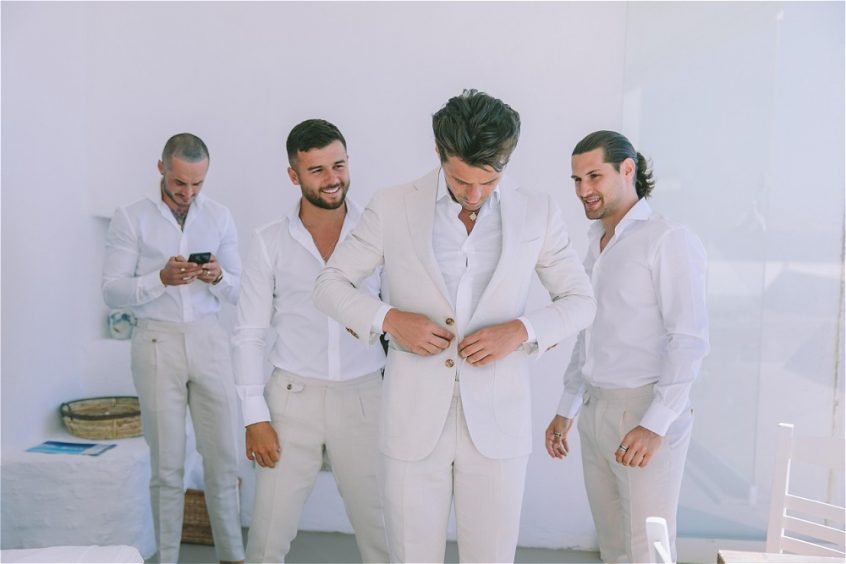
Accordingly, the koumbara – the maid of honor – will help the bride’s preparations and her rig out.
Another Greek wedding tradition is the one according to which the single ladies write their names on the bottom of the brides’ shoes. Tradition has it that the names of the girls that will be worn out by the end of the night are the ones that will get married soon. When the bride is ready, she traditionally leaves with her father to go to the church.
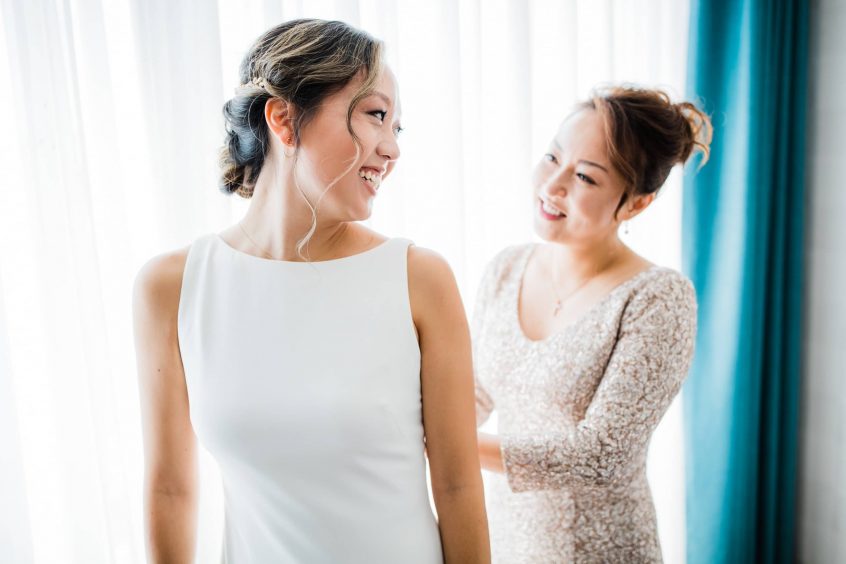
SYMBOLS OF GOOD LUCK
Firstly, couples invite an odd number of guests. Odd numbers are good luck since they cannot be divided and that is what we hope for the couple. Another tradition coming from ancient times is the act of spitting three times (ptou- ptou-ptou) by the guests after offering congratulations or compliments to the couple. In fact, the number three is especially symbolic as it represents the holy trinity, the Father, Son, and Holy Ghost.
Also, the act of placing a lung of sugar inside a bride’s glove is considered to ensure a sweet life. Additionally, the act of placing a gold coin inside her shoe will bring her financial prosperity.
When it comes to the groom, he shall put a piece of iron in his pocket to block evil spirits.
TRADITIONS DURING THE CEREMONY
BLESSING THE RINGS
At the start of the Greek wedding, the couple will place the rings on the tips of their fingers and the koumbaro will exchange them three times- (following the rule of three). After that, the priest blesses the couple and place the rings on their hands.
The couple wears the rings on their right hand and they signify their new ”man and wife” status During the ceremony the couple holds their hands together as a symbol of unity between them the establishment of an everlasting bond.
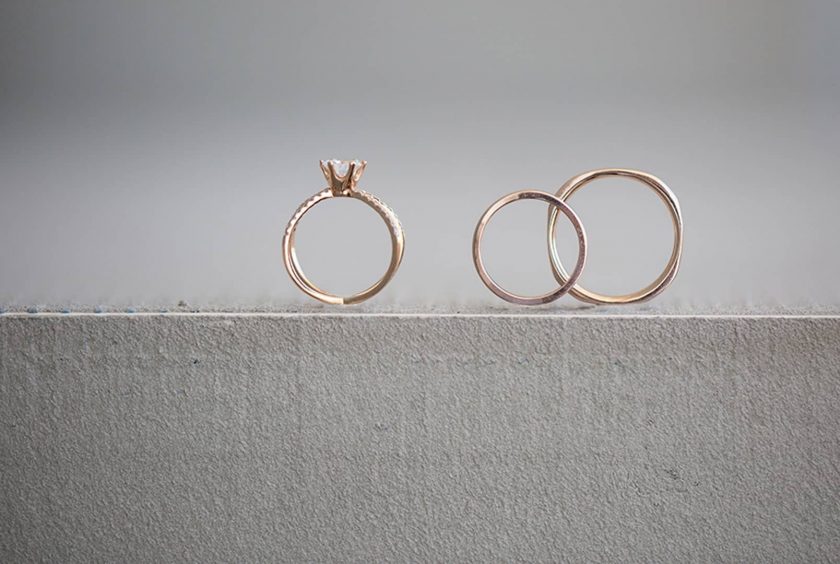
WEDDING CROWNS (STEFANA)
Similarly to the wedding rings, wedding crowns or Stefana are used to signify the start of a union. They also signify the fact that the couple shall rule their household together. Usually, stefana are made of flowers, silver or gold and they are joined together by a strand of ribbon.
According to this Greek wedding tradition, the koumbaro will swap back and forth the crowns three times before the priest blesses the couple and remove the crowns.
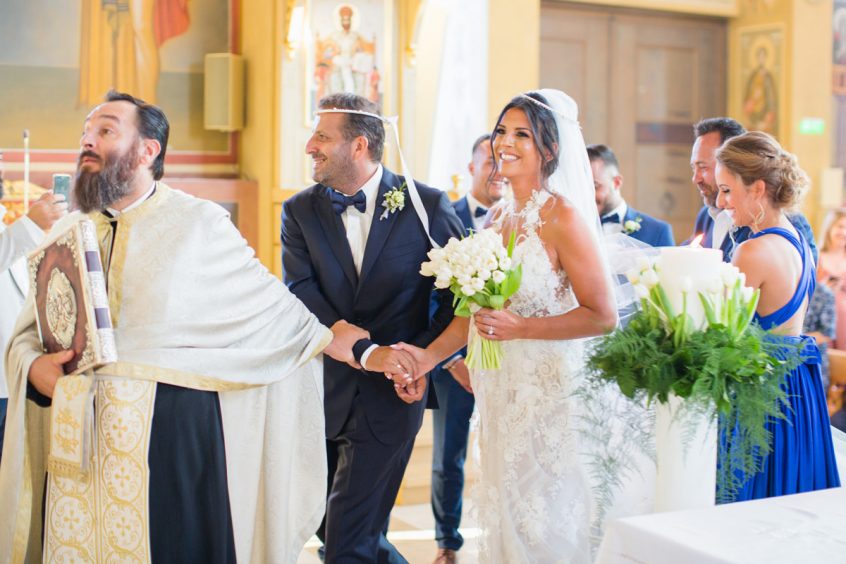
CANDLES AND THE COMMON CUP
Another Greek wedding tradition is the common cup. According to this the couple shares this cup and each of them drinks three sips of wine from the cup. The wine is a symbol of life and the sharing is a sign of how the couple will share successfully its life together.
Additionally, the couple holds candles throughout the wedding as a symbol of the light of Christ. These candles should burn completely in the church or at home but they should never be thrown out.

KOUFETA
Koufeta, fresh almonds with a sugar coating are present in most traditional Greek weddings. The egg shape represents fertility, purity and their bittersweetness symbolizes the good and the bad parts of all marriages.
However, the sugar coating is meant to balance it with happiness and the endurance of marriage. The koufeta are beautifully packaged into bomboniere in odd numbers and guests can have them after the wedding ceremony.
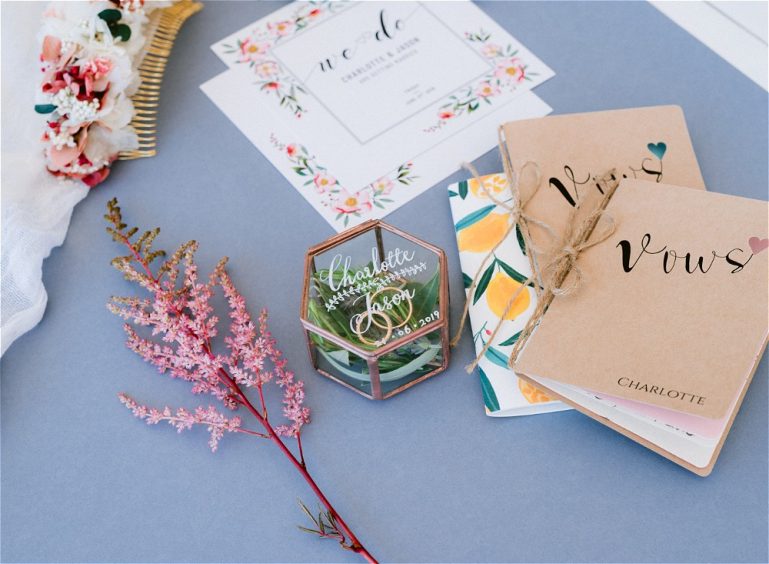
CELEBRATING THE WEDDING
Last but not least, as you may know, the Greek wedding celebration is loud and exciting. In the past, the smashing of plates was a very common wedding custom, but nowadays it is out of fashion.
There is so much joy and enthusiasm in the atmosphere and of course dancing is a major part of the celebration.
Specifically, the most common Greek dances at the weddings are Tsamiko, Zeimbekiko, Syrtaki, Kalamatianos In these traditional dances the attendants dance in the rhythm while holding hands in a circle. The groom and bride take the last dance, and the guests give them money.

If you are interested in finding out more about the Greek wedding traditions, and want to incorporate them into your own wedding, feel free to click here to contact us! We love assisting couples who consider Greece as their wedding destination!
FAQs
Modern Adaptations:
How do modern Greek couples adapt or modify these traditional customs to fit contemporary weddings, especially in urban settings or destination weddings?
Modern Greek couples often blend traditional customs with contemporary elements to suit their personal style or the logistical realities of urban or destination weddings. For example, couples might simplify or redesign the “stefana” (wedding crowns) to match modern aesthetics, and they could incorporate traditional dances into a more diverse playlist that includes contemporary music. These adaptations allow couples to honor their heritage while reflecting their unique preferences.
Incorporating Traditions in Non-Greek Weddings:
How can non-Greek couples or those having a destination wedding in Greece incorporate these traditions into their ceremony respectfully?
Non-Greek couples can incorporate Greek traditions into their wedding by selecting elements that resonate with them, such as the “koufeta” (sugar-coated almonds) or a Greek blessing during the ceremony. When you work with a Greek wedding planner or someone familiar with the culture, they help integrate these traditions respectfully and meaningfully, enriching the celebration and making it more inclusive.
Regional Variations:
Are there significant differences in wedding traditions across various regions of Greece, and how might these influence a wedding’s style or rituals?
Greek wedding traditions can vary significantly across regions, with differences in rituals, attire, and even the sequence of events. For instance, weddings in Crete might feature distinct musical traditions, while those in the Cyclades might emphasize different culinary elements. Understanding these regional nuances can help couples decide which traditions best align with their vision for their wedding, adding an authentic touch to the celebration.
